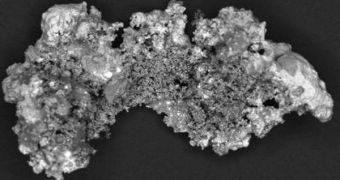The main asteroid belt lies between the orbits of Mars and Jupiter, and includes some of the oldest rocky formations in our star system. According to a new paper released by experts at the Southwest Research Institute (SwRI), it may be that some of the oldest asteroids in there were not formed around the Sun, but in the outer reaches of the solar system, on the exterior asteroid belt, where Pluto and the other dwarf planets except Ceres lie.
Using complex numerical simulations, the team determined that, approximately 3.9 billion years ago, when the solar system was still young, a major “spasm” occurred, when the four largest planets around the Sun – Jupiter, Saturn, Neptune and Uranus – rearranged their orbits in what was considered to be a swift move. Regularly, orbital shifts and moves occur through slow degradation, over hundreds of millions to billions of years, but these movements took place in a few years, which led to a large number of tiny objects orbiting the Sun being either destroyed, accumulated, or scattered.
The Earth, the Moon, Mars, Venus and Mercury all bore the brunt of these changes, being bombarded with rocky fragments and comets for many years. This is evidenced by the fact that the same microasteroids found in the lunar soil samples the Apollo astronauts brought back can be found on Earth as well, and traces of them were discovered on other planets around too. “This last major event of planet formation appears to have affected nearly every nook and cranny of the solar system,” SwRI expert Dr. Hal Levison, the lead author of the new study, explains.
The team also managed to demonstrate that the vast diversity of rocks in the inner asteroid belt couldn't have possibly been determined by chemical variations in the protoplanetary disk these rocks were previously thought to originate from. The intrinsic compositional variation of that disk was, in other words, insufficient to explain why everything from primitive ice/rock mixtures to igneous rocks could be found in the asteroid belt. “In the classic movie 'Casablanca,' everybody comes to Rick's. Apparently throughout the solar system, the cool hangout for small objects is the asteroid belt,” SwRi scientist Dr. William Bottke adds.
“Some of the meteorites that once resided in the asteroid belt show signs they were hit by 3.5 to 3.9 billion years ago. Our model allows us to make the case they were hit by captured comets or perhaps their fragments. If so, they are telling us the same intriguing story as the lunar samples, namely that the solar system apparently went berserk and reconfigured itself about 4 billion years ago,” Dr. Kleomenis Tsiganis, from the Aristotle University of Thessaloniki, in Greece, concludes.

 14 DAY TRIAL //
14 DAY TRIAL //